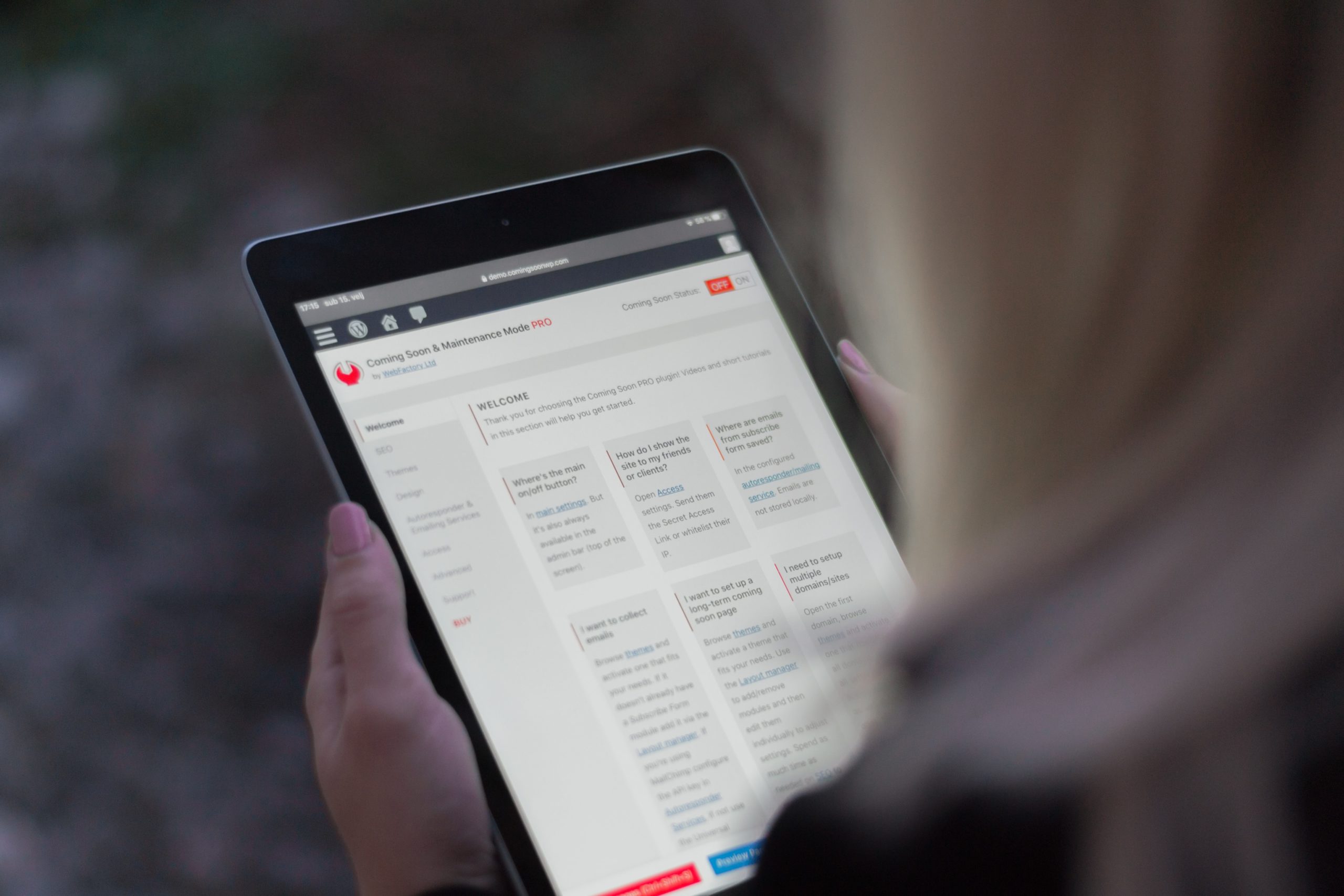Forging trainee loyalty is really important for training companies: although a trainee generally signs up for a one-off course, they could in reality take advantage of the entire training catalogue! Newsletters enable you to send regular, quality emails to a database of contacts: a way of building a lasting relationship with your trainees after their course.
Nowadays, many software programs exist to simplify the process of putting together a newsletter: helping you to segment your contact database, design your email and track readership statistics. Even with the best tool in the world, however, it is sometimes hard to know where to start! Here is a short step-by-step guide to creating your first newsletter.
Why make a newsletter?
A newsletter is not a sales prospecting tool! The aim is not to sell your training, but to create a media tool dedicated to a professional theme. It is a way of showcasing your expertise, sharing client testimonials and offering a glimpse into the life of your company!
Creating a newsletter therefore means determining an awareness objective in advance. This could be to:
- Attract more traffic to your website
- Build up a qualified database
- Know your clients better
- Foster trainee loyalty
Knowing this objective will help you define who your recipients are and what content to include in your emails!
Step 1: compile an email database
A good newsletter is one that has readers! The first key step is therefore to compile a file of contact emails.
Creating your contact file:
You probably already have a lot of email addresses in stock! Whether current or former clients, prospects or partners, writing a newsletter is a way of forging a relationship with dormant contacts. To compile your email database, therefore, start by searching your archives: all those client files and business cards are just waiting to be used!
You can then enrich your email database by collecting email addresses throughout the year:
- At the end of your training courses, ask trainees if they would like to receive your newsletters.
- Add a sign-up form to your website to enable those who wish to follow you!
- Do you take part in professional events? Ask the people you meet directly if they are interested: you will find all the contact details you need on their business cards.
Segmenting your email database:
Who do you want to receive your newsletters? The companies you work with? Your individual clients? Your key partners? In order to send the right information to the right person, you must segment your email database.
Once you have compiled all the email addresses into an Excel file, enrich it with columns for:
- email address
- first names and surname
- position in the company
- telephone number.
Depending on your activity, you can refine this Excel file even further by adding information specific to your recipients’ activity:
- If they have already completed training with you
- Their level of training
- The number of employees
- When and where you obtained their email address
Using email marketing software, you can then divide your email database into sub-groups based on the information you have entered: this will enable you to send your potential clients relevant newsletters! It is up to you to decide what information you want to give them. You can, for example, create:
- A group for individual clients and a group for corporate recipients
- A group for small enterprises (fewer than 10 employees) and a group for larger companies (more than 10 employees)
- Monthly recipient groups: this means you can send them the same series of emails spread out over time!
A word about data protection:
Since the arrival of the General Data Protection Regulation (GDPR), newsletters must comply with certain rules, particularly as regards email databases: you cannot purchase or use databases for purposes other than those for which the data subject gave their explicit consent.
When you collect the email address of a client or trainee, you must therefore ask them to confirm that they wish to receive your newsletter. There are two options for doing this:
- A box to tick on your website (which must not be pre-ticked)
- Or an email with a confirmation link that the person must click. Note that if you collect emails using a paper form, you must still apply the ‘double opt-in’ process and send your client a confirmation email!
Nowadays, email software programs have adapted to the new regulation and enable you to validate your email databases in full compliance with the law.
Step 2: configure your newsletter
Choose a tool to send it:
It is quite possible to design your own automated email tools but this does pose certain technical challenges in terms of formatting, deliverability and monitoring statistics. Fortunately, recent years have seen the launch of a number of software programs enabling companies to easily create high-quality newsletters. Depending on what you want to do and the volume of your business, here are a few such programs you can try:
- Mailchimp: this is one of the most popular tools, notably as it enables you to create particularly stylish newsletters. It is free of charge for up to 2,000 emails / month.
- Mailjet: this software provides greater flexibility in configuring your newsletters. It costs approximately €7 for 30,000 emails / month.
- Sendinblue: Sendinblue is extremely affordable and enables you to send up to 9,000 emails / month free of charge, then 40,000 emails / month for less than €6.
Work on your deliverability:
‘Deliverability’ means the capacity for your emails to arrive in your recipients’ inbox and not in the Junk folder. When you send an email from your domain name, the Internet Service Providers (ISP) analyse the email and give your domain name a score: if you have a good score, your email will go directly to the inbox. If your score is poor, however, your emails will go to the Junk or Spam folder, and may even not be sent.
Working on your deliverability means ensuring you have a good reputation among ISPs at all times and can be achieved by following a few simple rules:
- Use a personalized sending domain: a domain name like gmail.com is used by a huge number of people and therefore has a very poor score with ISPs. If, on the other hand, you have your own domain name, you have complete control over your reputation!
- Give your readers the option to unsubscribe: an email database that is regularly updated is one that only contains people who want to receive your emails. Make sure you update it regularly, therefore, and include an ‘unsubscribe’ button in your email footer.
- Identify yourself: a clear sender name and an email subject that corresponds to the content are two ways of reassuring your readers and ensuring they will open your email.
- Too many images kill the image: while people like illustrated newsletters as they are more stylish, many email services are reluctant to display images by default. Be careful, therefore, that your recipients do not receive ‘empty’ emails that could be potentially considered as spam.
- Beware of Spam Words: some phrases have been so over-used that ISPs now automatically consider them as spam.
Step 3: work on the content… and on the form!
The form: creating a newsletter in your image
The appearance of a newsletter is crucial: as well as being a veritable window display for your business, it must also be readable on all devices (computer, tablet and telephone). It is therefore worth spending a bit of time on the design!
The first stage consists in creating a newsletter in the image of your company, so be sure to integrate your graphic identity into its design. Your logo, colours and character font can then be reused to reflect the personality of your company.
The second stage consists in making your email readable! Without necessarily using the services of a graphic designer, make sure that the colour of the font shows up clearly on different screens. Adapt the size of your images to reduce the download time and ensure the margins on each side of your email are wide enough to make for more fluid reading. In any case, carry out tests and don’t hesitate to ask those around you for their opinion!
The content: what to put in your email?
No need to write a novel to make a good newsletter! There are as many newsletters out there as there are companies and it is up to you to find your own style. To inspire you, here is the layout of a typical email:
- Header: this visual banner contains the logo of your training company and makes you quickly identifiable.
- Editorial: this is an opportunity to express yourself and address a subject close to your heart. If you are an entrepreneur, it gives you the chance to embody the values of your company with a touch of humour!
- News: are you taking part in a trade fair? Is your area of expertise affected by legal or technical changes? Inform your readers!
- Testimonials: let your clients take the floor! Whether to give feedback about your training or offer thoughts on your field of activity, it will be interesting for your readers.
- List of your upcoming training courses: inform your clients and share the dates and content of upcoming courses.
- A ‘call to action’: this is a button you can add to encourage your recipients to act. This could mean signing up to one of your courses or sharing information on social media.
- Footer: the foot of your email can contain important information such as your contact details, your social networks, your legal notice, the purpose of the email and the ‘unsubscribe’ button.
Nowadays, it is easy to create your first newsletter. However, given the constant flow of emails everyone receives every day, standing out from the crowd remains a challenge. It is therefore worth spending time on your email databases and newsletter texts in order to offer relevant content. Don’t hesitate to test them with family and friends or with a limited group of recipients and feel free to draw inspiration from those you receive!












